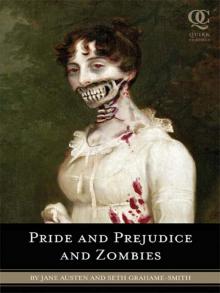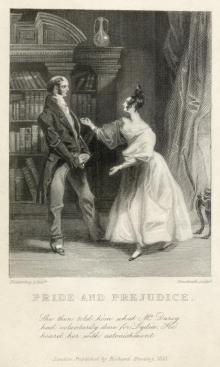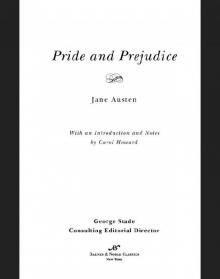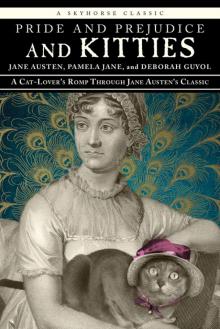- Home
- Jane Austen
The Annotated Mansfield Park Page 3
The Annotated Mansfield Park Read online
Page 3
In the matter of social milieu, while Emma is distinctive for its comprehensive description of a single rural community, Mansfield Park shines for its portrait of three very different social worlds. Its principal world is Mansfield Park itself. Grand houses were at the pinnacle of English society and play a critical role in all Austen’s novels, and their particular characteristics are explored in their greatest depth here. The second world is fashionable London society, another leading element of contemporary England. It receives here its sole sustained evocation by Jane Austen, through the characters of Mary and Henry Crawford. The third world is Fanny’s home in Portsmouth, the author’s only foray into such a humble milieu. In these scenes she vividly describes both the personal and the material aspects that contrast the Prices’ life with the wealthier and more genteel society she otherwise depicts.
The novel also uses these worlds, and the contrasts among them, to develop fundamental moral themes. Mansfield Park is ostensibly the site of an ideal blend of sound moral principles and polished manners, contrasted with fashionable London society, whose exterior elegance and politeness are accompanied by moral laxness. Yet through the Crawfords—with their wit, charm, good humor, and clever and erudite conversation, along with their fine manners—Austen acknowledges the attractiveness of their sphere and why it could exercise such influence. Furthermore, the powerful effect of the Crawfords upon the Bertrams underlines the critical weakness of the Mansfield Park family: their focus on elegant manners, and on the wealth and social position that help support them, has caused them to neglect moral principles, which leads ultimately to the tragic denouement of the story. As for the Prices, they adhere, even if imperfectly, to a basic moral code, but their lack of manners causes continual conflict and frequent unhappiness, demonstrating that while manners may be of lesser importance, they still have value. Finally, Fanny herself, who is not a full member of any of these worlds, serves as an additional locus of contrast. Her memories of Mansfield Park make her more keenly aware of the social defects in Portsmouth. Her consistently firm moral stance in her exchanges with both Crawfords highlights their moral deficiencies. Most important, she reveals more than anyone the defects at Mansfield Park. Her bookishness and her social apartness mean that the high-minded principles in books have substantially guided her; in contrast, most of the Bertrams, like so many wealthy families, have paid only lip service to those principles and instead let fashionable and worldly mores guide their behavior. Fanny’s resulting independent standards allow her to perceive the failings around her in the early part of the book, to stand on principle with unexpected firmness later, and, finally, to serve as a moral corrective and source of inspiration at the end.
This complex interplay of theme and milieu is matched by similar complexity of character. In all other Austen novels, at most two characters are multifaceted ones who struggle with contradictory feelings and who evolve over the course of the story: the main heroine and either a second heroine (in Sense and Sensibility) or the hero (to varying degrees in the other four novels). Mansfield Park, however, has at least four such characters: Edmund, Mary, Henry, and Fanny. All four receive extensive treatment, with the first three revealed at times by the author’s direct presentation of their thoughts or private conversations, and even more by Fanny’s careful observation of them. Edmund and Mary are portrayed as being strongly attracted to each other while strongly objecting to each other’s principles and priorities, which creates parallel internal conflicts. Each in turn becomes angry or frustrated with the other and vows to abandon aspirations of romance, before regretting this decision and relenting, leading to a period of positive hopes and plans, eventually dashed by reminders of the gulf between them. At the same time, their respective stories do exhibit an overall arc, as each gradually becomes more inclined to choose the other—with Mary in particular seeming to accept more and more the previously unthinkable notion of marrying a clergyman—before their siblings’ scandal leads to a definitive break and a revelation of their profound differences. Even after this, both display some regret and hope for reconciliation.
Henry presents initially a less multifaceted character, seeming to be simply an intelligent man in perpetual pursuit of amusement, most notably through the temporary conquest of female hearts. But as his pursuit of Fanny gradually leads to genuine interest and then affection, he reveals additional dimensions. He comes to understand and appreciate her unusual moral qualities. He also displays, in his reaction to William Price and in conversations with Sir Thomas and Edmund, glimpses of more general moral seriousness. By the time he visits Fanny in Portsmouth, he exhibits clear evidence both of efforts toward personal reform and of his continued mercurial nature. The complexities and ambiguities of his character are such that the author takes the unusual step at the end of declaring that a trivial decision of his, one he almost made differently, could have led to a completely different outcome for him (and in consequence for the other principals). In fact, more than any other Austen character, Henry has inspired numerous readers over the centuries to wish he had made an alternative decision and met a happier fate, or to believe this should have happened, that his acting differently at the end would be more plausible. Such a sentiment seems to have been shared by Jane Austen’s sister, Cassandra, the person she was far closer to than any other: a fan of Austen’s novels, relating a conversation she had in the 1850s with an Austen niece, reports that the niece recalled hearing Cassandra argue with Jane that she should allow Henry to marry Fanny. In a letter the author, speaking of her brother, writes, “Henry is going on with Mansfield Park; he admires H. Crawford—I mean properly—as a clever, pleasant Man” (March 2, 1814), a sign that she was far from condemning her creation, even as her story ultimately condemns him to unhappiness.
This novel also presents a uniquely complex parental figure in Sir Thomas Bertram. All Austen heroines (and some heroes) have parents who play important roles in the story. Yet in all other cases they are primarily marked by a few characteristics and remain essentially unchanged throughout the novel. Sir Thomas, however, shows a variety of dimensions, being at the outset a man of high intelligence and responsibility and good moral principles who also, through aloofness and coldness of manner and excessive concern for social position, neglects the education and moral development of his children and remains blind to the true nature of his daughters, of Fanny, and of Mrs. Norris. Moreover, he undergoes a significant evolution that forms another important story arc, first showing, after he returns from Antigua, an increased appreciation of Fanny and doubt about Mrs. Norris, then revealing his continued limits in his reaction to Fanny’s refusal of Henry, and finally realizing his profound errors. Furthermore, unlike another father forced to confront a family disaster due in part to his own negligence, Mr. Bennet of Pride and Prejudice, Sir Thomas experiences more than temporary regret and alters his outlook and conduct, a development made plausible by the moral seriousness and reflectiveness he has always displayed.
Finally, the variety of significant and interesting characters in Mansfield Park contributes to the strongest plot in all of Austen’s novels. Sense and Sensibility and Pride and Prejudice are similar in having dramatic and eventful plots, but these two, especially the former, rely for their drama on melodramatic developments, including some told in a long and woeful backstory, a common device in other novels of the time that Austen ridicules in some of her writings. Moreover, both, especially Pride and Prejudice, contain highly improbable coincidences that are crucial for the plot, another device common in the novels Austen satirizes and that conflicts with her general preference for strict realism and ordinariness. The other three, Northanger Abbey, Emma, and Persuasion, are more subdued in their plots, employing less melodrama and coincidence (though all three still have some of both). But their plots are also much simpler and less eventful. The hero and heroine like and appreciate each other from the beginning, and the story mostly involves waiting for them to become fully cognizant of their affection and suit
ability. In Northanger Abbey and Persuasion this means a short and generally straightforward march toward the denouement, while in Emma progress is lengthened and complicated by subplots involving supporting characters.
In contrast, Mansfield Park contains no coincidences as well as no significant melodrama other than the final elopement of Henry and Maria, while its plot is full of developments and twists and remains in a state of acute uncertainty and tension until the end. It alone does not follow the pattern of having a heroine encounter early on a man who both is right for her and is, or has been, interested in her, a more typical scenario that leaves the author the option of either letting the course of true love run fairly smoothly or impeding and resolving it with often melodramatic developments. Mansfield Park follows a different pattern, linking the four main characters in a chain of affection, where A (Henry) loves B (Fanny), who in turn loves C (Edmund), who in turn loves D (Mary); in each case the beloved object is hostile or unconscious or ambivalent. The chain is further extended by the two lesser characters of Mr. Rushworth, who loves Maria, and Maria, who loves Henry. This situation allows new developments to arise naturally and realistically, with no recourse to extraneous causation, while leaving the final outcome in doubt until the end.
The crucial handicap of this structure, and the almost certain reason why Jane Austen does not resort to it elsewhere, is that it shifts the action away from the main heroine, the figure who is always central to her novels and through whose eyes the story always occurs. This is not a fatal problem in this case, because Fanny’s passivity, along with her sensitivity and reflectiveness, allows her to serve as an excellent observer of others’ actions and recipient of their confidential disclosures. Yet not everything can be witnessed or heard by Fanny; nor can the author have too many scenes occurring away from her, or too many descriptions of the thoughts of other characters, without abandoning the heroine’s centrality. This problem is especially acute in the case of Henry and Maria, for their final action, if fully narrated as its importance would seem to demand, would require a substantial portion of the novel to occur outside Fanny’s view.
The author attempts to resolve that problem with two devices. The first is the priority given in the first third of the novel to the visit to Sotherton and to the theatrical performances. These episodes are notable because, despite their prominence and their superb artistry, they lead in the immediate term to no significant plot developments. Edmund and Mary’s relationship progresses during both episodes, but it also progresses through other incidents, rendering these scenes in no way necessary for this purpose. They are more important for Maria and Henry’s relationship, but they conclude with the two characters back essentially where they started; he has resumed his usual nomadic pursuit of pleasure, and she proceeds with her marriage to Mr. Rushworth. Yet the episodes’ long-term function is crucial. In both, Maria and Henry elope together in a metaphorical sense. Moreover, they reveal the characteristics that will eventually lead to their fateful final action, namely, her powerful feelings for him and his willingness, from vanity and a love of variety and amusement, to encourage her beyond what both decency and prudence would allow. Hence these episodes allow the author, through vivid early scenes that occur directly in Fanny’s presence or awareness, to foreshadow and adumbrate the final scenes that can be summarized only from a distance and in retrospect.
The second device, a far less happy one, is to present many of the later plot developments in the form of letters. Nabokov, in his comments, says that in this section the novel “shows signs of disintegrating,” and “this letter-writing business is a shortcut of no great artistic merit.”*5 This underrates the usual artistry with which Austen reveals character through the content and style of letters, as well as the letters’ function in giving a sustained insight into the vacillating attitudes of two important characters, Mary and Edmund. Nonetheless, the letters are a poor substitute for the vividly dramatized scenes in the rest of the novel. Mostly they are simply a necessary mechanism to keep Fanny and the reader abreast of other important characters and incidents during the Portsmouth section, which is crucial to the novel, since it highlights certain moral and social themes, teaches Fanny about her true place in the world, and provides the fatal test of Henry’s reform and fidelity by separating him from Fanny.
The concluding chapters that come just after the letters have a similarly summary quality, as a long series of critical events and changes is narrated in quick succession. This makes the last part the weakest section of the novel; yet this is also a symptom of the novel’s greatest strength, its embarrassment of riches when it comes to complex and fully developed story lines, characters, and themes. With so many superb elements in play, far more than in any other Austen novel, the author is forced at the end to be somewhat cursory in wrapping up all these loose strands without extending the novel to far greater length. But the riches that came before are so great, and the overall structure so harmonious and carefully integrated, that the deficiencies at the end fade in importance, and the reader is left with what is, in this writer’s opinion, the finest sustained example of Jane Austen’s artistic brilliance.
* * *
*1 Julia Kavanagh, from English Women of Letters, quoted in B. C. Southam, ed., Jane Austen: The Critical Heritage (London: Routledge, 1968), p. 187; and H. L. Mencken, “Jane Austen,” in A Second Mencken Chrestomathy, ed. Terry Teachout (Baltimore: Johns Hopkins University Press, 1994), p. 231.
*2 “A Long Talk About Jane Austen,” quoted in Ian Watt, ed., Jane Austen: A Collection of Critical Essays (Englewood Cliffs, NJ: Prentice Hall, 1963), p. 37.
*3 Vladimir Nabokov, Lectures on Literature, ed. Fredson Bowers (New York: Harcourt Brace Jovanovich, 1980); above quotes are in the introduction by John Updike, p. xxi.
*4 The rest of this introduction will include plot spoilers, for those not familiar with the novel.
*5 Nabokov, Lectures on Literature, pp. 49, 52.
VOLUME ONE
Chapter One
About thirty years ago,1 Miss Maria Ward of Huntingdon,2 with only seven thousand pounds,3 had the good luck to captivate Sir Thomas Bertram, of Mansfield Park,4 in the county of Northampton,5 and to be thereby raised to the rank of a baronet’s lady,6 with all the comforts and consequences of an handsome7 house and large income. All Huntingdon exclaimed on the greatness8 of the match, and her uncle, the lawyer,9 himself, allowed her to be at least three thousand pounds short of any equitable claim to it.10 She had two sisters to be benefited by her elevation; and such of their acquaintance as thought Miss Ward and Miss Frances quite as handsome11 as Miss Maria,12 did not scruple13 to predict their marrying with almost equal advantage. But there certainly are not so many men of large fortune in the world, as there are pretty women to deserve them.14 Miss Ward, at the end of half a dozen years, found herself obliged to be attached to the Rev. Mr. Norris,15 a friend of her brother-in-law, with scarcely any private fortune, and Miss Frances fared yet worse. Miss Ward’s match, indeed, when it came to the point, was not contemptible, Sir Thomas being happily able to give his friend an income in the living of Mansfield,16 and Mr. and Mrs. Norris began their career of conjugal felicity with very little less than a thousand a year.17 But Miss Frances married, in the common phrase, to disoblige her family,18 and by fixing on19 a Lieutenant of Marines,20 without education, fortune, or connections,21 did it very thoroughly. She could hardly have made a more untoward choice. Sir Thomas Bertram had interest,22 which, from principle as well as pride, from a general wish of doing right, and a desire of seeing all that were connected with him in situations of respectability, he would have been glad to exert for the advantage of Lady Bertram’s sister: but her husband’s profession was such as no interest could reach;23 and before he had time to devise any other method of assisting them, an absolute breach between the sisters had taken place. It was the natural result of the conduct of each party, and such as a very imprudent marriage almost always produces.24 To save herself from useless remonstrance
, Mrs. Price never wrote to her family on the subject till actually married.25 Lady Bertram, who was a woman of very tranquil feelings, and a temper26 remarkably easy and indolent, would have contented herself with merely giving up her sister,27 and thinking no more of the matter:28 but Mrs. Norris had a spirit of activity,29 which could not be satisfied till she had written a long and angry letter to Fanny, to point out the folly of her conduct, and threaten her with all its possible ill consequences. Mrs. Price in her turn was injured and angry; and an answer which comprehended each sister in its bitterness, and bestowed such very disrespectful reflections30 on the pride of Sir Thomas,31 as Mrs. Norris could not possibly keep to herself, put an end to all intercourse between them for a considerable period.32
Sutton Hall, Derbyshire, a grand house fitting much of the description of Mansfield Park.
[From John Preston Neale, Views of the Seats of Noblemen and Gentlemen, Vol. V (London, 1822)]
A barrister of the period (Sir George Trafford Heald, K.C.).
[From Sir Walter Armstrong, Lawrence (London, 1913), p. 56]
A general in standard army officer uniform, similar to that of the marines.
[From William Alexander, Picturesque Representations of the Dress and Manners of the English (London, 1813), Plate 29]

 Sense and Sensibility
Sense and Sensibility Persuasion
Persuasion Mansfield Park
Mansfield Park Northanger Abbey
Northanger Abbey Pride and Prejudice and Zombies
Pride and Prejudice and Zombies Pride and Prejudice
Pride and Prejudice Emma
Emma Persuasion (Dover Thrift Editions)
Persuasion (Dover Thrift Editions) Lady Susan
Lady Susan Northanger Abbey (Barnes & Noble Classics)
Northanger Abbey (Barnes & Noble Classics) Lady Susan, the Watsons, Sanditon
Lady Susan, the Watsons, Sanditon Darcy Swipes Left
Darcy Swipes Left Persuasion: Jane Austen (The Complete Works)
Persuasion: Jane Austen (The Complete Works) Mansfield Park (Barnes & Noble Classics Series)
Mansfield Park (Barnes & Noble Classics Series) Sense and Sensibility (Barnes & Noble Classics Series)
Sense and Sensibility (Barnes & Noble Classics Series) The Annotated Sense and Sensibility
The Annotated Sense and Sensibility Pride and Prejudice (Clandestine Classics)
Pride and Prejudice (Clandestine Classics) Persuasion (AmazonClassics Edition)
Persuasion (AmazonClassics Edition) Persuasion (Barnes & Noble Classics Series)
Persuasion (Barnes & Noble Classics Series) Complete Works of Jane Austen
Complete Works of Jane Austen The Watsons and Emma Watson
The Watsons and Emma Watson Northanger Abbey and Angels and Dragons
Northanger Abbey and Angels and Dragons Love and Friendship and Other Early Works
Love and Friendship and Other Early Works Emma (Barnes & Noble Classics Series)
Emma (Barnes & Noble Classics Series) Sanditon
Sanditon Pride and Prejudice (Barnes & Noble Classics Series)
Pride and Prejudice (Barnes & Noble Classics Series) Pride and Prejudice and Kitties
Pride and Prejudice and Kitties The Annotated Northanger Abbey
The Annotated Northanger Abbey Oxford World’s Classics
Oxford World’s Classics Northanger Abbey (Barnes & Noble Classics Series)
Northanger Abbey (Barnes & Noble Classics Series) The Annotated Persuasion
The Annotated Persuasion Emma (AmazonClassics Edition)
Emma (AmazonClassics Edition) The Annotated Emma
The Annotated Emma The Annotated Mansfield Park
The Annotated Mansfield Park The Annotated Pride and Prejudice
The Annotated Pride and Prejudice